Usually, scars are used in movies to show that a character is bad to the bone, or at least to the dermis. But rationally, we know that people with scars in the real world are just unlucky victims of trauma or surgery. So here are a potpourri of scars that illustrate more than scar-iness.
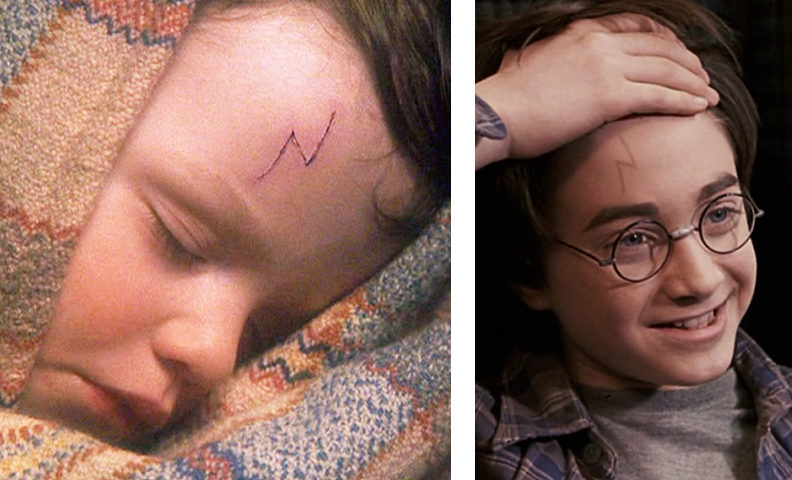
"Harry Potter and the Forehead Scar" Potter's magical hairstyle hides the fact that he's... ...Scarred and proud
Ah, grade school. A time when the world is fresh, human potential seems infinite, and any slight deviation from the norm means endless vicious teasing from your relentless peers. But young wizard Harry Potter is resilient. Even with a small defect, other kids might feel ostracized a la the pale, bald dude from "Powder." Not so, Potter. When he unabashedly reveals the lightning scar under his fashionable bangs, his colleague blurts out: "Cool." In the book versions, Harry Potter's lightning-shaped forehead scar is central, while the film version moves it sideways. Since Potter's forehead is usually covered by hair, moving the scar presumably saved the producers big money on makeup costs. They must have worried whether the film would break even financially. Silly muggles...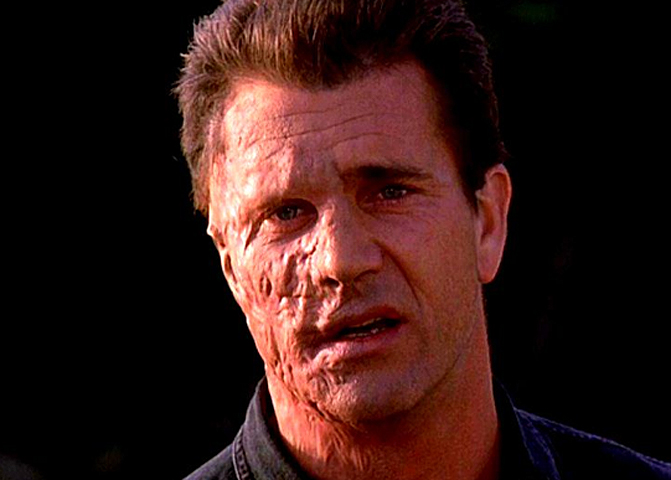
Mel Gibson stars as "The Man Without a Face" playing an outcast with facial scarring. He is portrayed not as a villain, but as an ordinary person with extraordinary scars. This movie was probably the source of an ongoing urban myth that Gibson himself was hideously scarred. According to this legend, a kind-hearted plastic surgeon arduously repaired his damaged looks and eventually he emerged as the famous but flawed icon we know today. Sounds like a great movie plot, but entirely untrue!
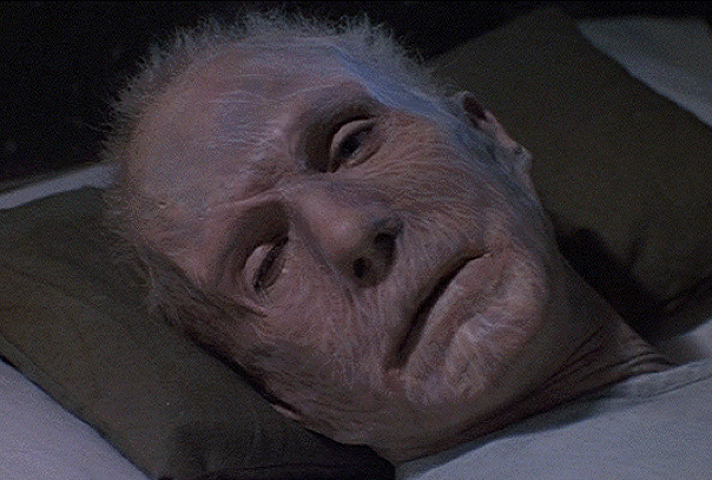
The English Patient
A fine film with a rare realistic depiction of burn scars. Actor Ralph Fiennes spends most of the film prone and being nursed by French actress Juliet Binoche. His character is not portrayed as a villain, but rather as a tragic romantic (albeit adulterous) victim. The dramatic makeup authentically recreates scarring from third degree burns. Interestingly, the promotional materials for the movie all avoid showing the burns, which are readily seen throughout the film.
In "Secrets & Lies," director Mike Leigh ups the ante by featuring a scarred woman. A victim of car accident, she is suing because of her now hopeless career as a "beauty consultant." Her rage and shame are heightened by her desire to have photos taken that accentuate the scarring. In a world where even minor defects in a woman's appearance are judged, severe scarring can be psychologically devastating.
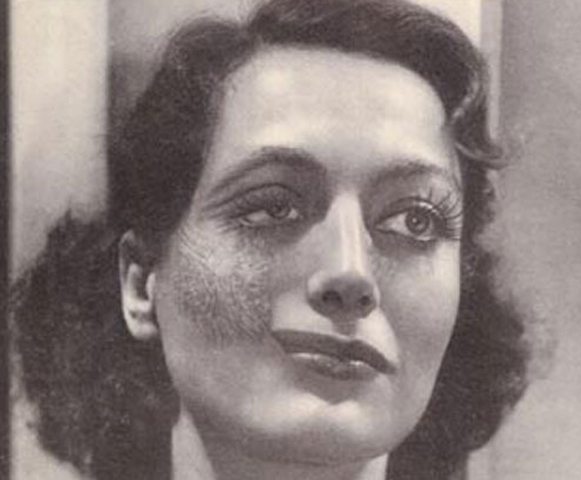
Old School: Joan Crawford scars
Next up is the mother of all sympathetic scarred performances by an actress. Yes, we're going old school. Back to 1941. Back to black and white. Back to a time when "A Woman's Face" was the basis for an entire film. In this classic courtroom melodrama, Joan Crawford's character has severe facial scarring and despises the world. With so little to live for, she enters into evil plans with her criminal boyfriend. Yet fate and medical science intervene--a plastic surgeon is able to restore her scarless beauty. Now with a goodness in her heart that matches her new found complexion, she questions her moral choices. Though the movie propagates the fiction that scars reflect moral wrong and plastic surgery can eradicate evil (not even a dermatologist can do that), Crawford is able to create a sympathetic character. One can believe that the disfigurement, given Western society's emphasis on female beauty, could drive her character over the edge into lawlessness.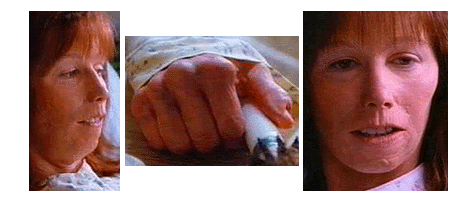
Does this sound like reality? Imagine being told that you have developed a condition of unknown cause, where thickening and tightening of the skin occurs. Joints stiffen and cease to function. Eventually, internal organs like your lungs and kidneys may whither with extensive scarring. This is the position of those given the diagnosis of scleroderma. Actor Bob Saget had first hand experience with this fortunately rare disease, as his sister was diagnosed and eventually succumbed to this potentially fatal condition. He went on to direct her story "For Hope," a TV film starring Dana Delany. About the only good news about scleroderma, other than its extreme rarity, is that it can be mild in some (with CREST syndrome), and there have been recent breakthroughs using UV light therapies to reduce skin scarring. For the those of us free of this condition, let us hope it is a reality we never have to face.

"Casablanca" is considered by many to a dramatic classic. In fact, it was rated by the American Film Institute as the second greatest American film of all time (behind the ground breaking "Citizen Kane"). In the film, Humphrey Bogart's lip scar is fairly well hidden. Yet another scar, created with makeup, is plainly visible. As a leader of the French Resistance against the Nazi's in World War II, Paul Henreid is clearly heroic. His scar, rather than a routine signal of evil, instead illustrates his ability to survive and triumph over adversity. Though this could have been the beginning of a beautiful friendship, a significant new trend, it was not to be. Film makers realized that if they started featuring heroic figures with scars, they'd regret it. Maybe not today. Maybe not tomorrow, but soon and for the rest of their lives. It didn't take much to see that the skin problems of three little people didn't amount to a hill of beans in this crazy world. Here's looking at them kid.
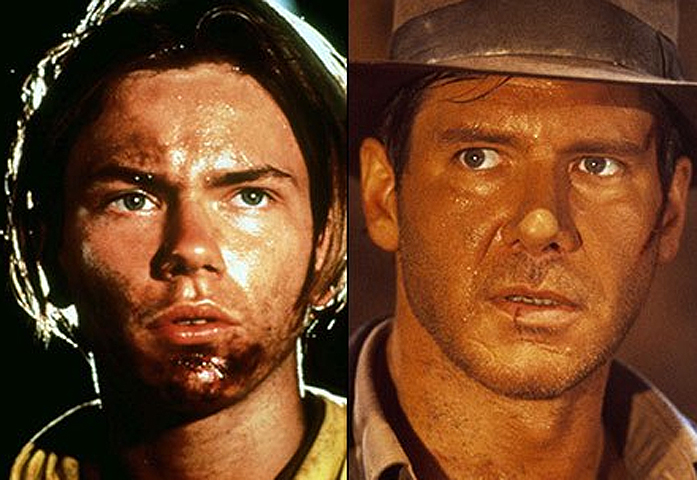
This may be the only example where an actor's real scar results in the scar's "creation" as part of the plot. Film icon Harrison Ford has a chin scar seen in all his films, including the Indiana Jones series. In "Indiana Jones and the Last Crusade," River Phoenix portrays Jones as a young man. A fast-paced flashback introduces many of Jones' character traits: his fear of snakes, his use of a whip and hat. And his scar from an injury that young Indy sustains. All in the name of truth, justice, and archeology.
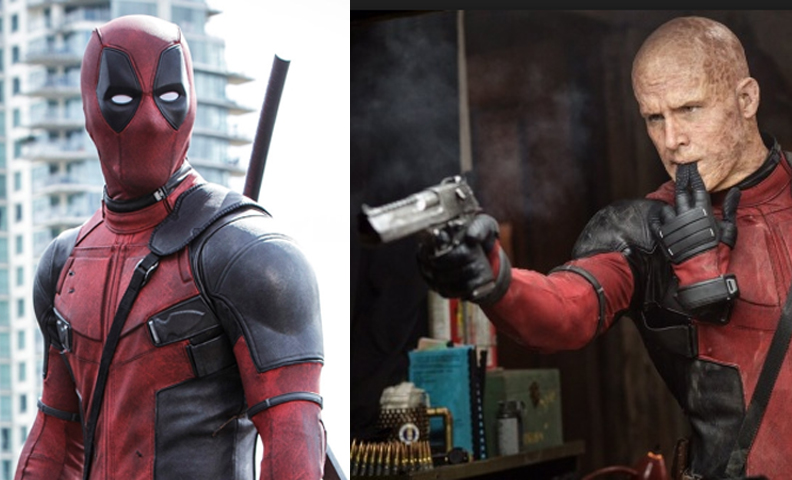
Fans don’t flock to superhero movies to see reality. They enjoy action sequences and tales that represent myth and fantasy at a high level. “Deadpool,” the latest comic-based cinematic sensation, moves even farther from our authentic world. As the wise-cracking titular anti-hero, Ryan Reynolds spends much screen time chatting to the audience, quipping through the fourth wall and even pushes the camera away from a moment of particularly gratuitous gore.
It is therefore remarkable that the film accurately depicts a daily reality for many with skin issues: Social stigma. After developing inoperable cancer, Reynolds undergoes an experimental treatment. It saves his life and gives him super powers but has terrible consequences. We are not talking pesky nausea, diarrhea, or dizziness. Instead he is left hairless, covered head to toe with deforming scars.
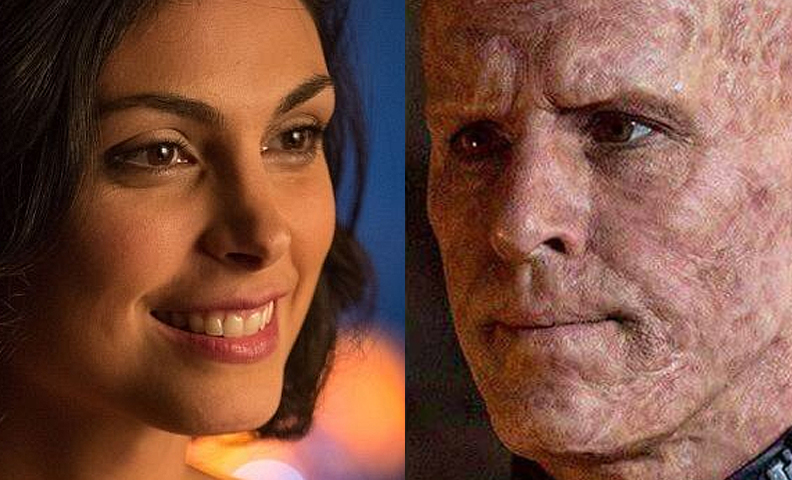
Physically powerful, Deadpool’s confidence is shattered such that he avoids his fiancée for months and hides behind his lycra mask. He finally builds up his courage to meet her outside of her apartment. As he walks down the public street, passersby react to his scars with shock and disdain. They look away and mutter under their breath. Broken by this response, he flees. Any of us with normal skin take it for granted. Yet those with facial scars, rashes like eczema and psoriasis, even adult acne, can find their ego undermined. If they are not limited by others’ reaction, they may still restrict their own advancement, a form of self ostracization. Most chronic skin conditions are not contagious and should not be used to limit those patients’ advancement and happiness. Comic book flicks don’t typically educate, but “Deadpool” remarkably teaches that lesson.




